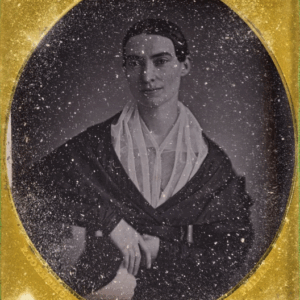JTF (just the facts): Self-published in 2020 (here). Softcover with spiral binding, 20 pages, with 14 black and white photographs. In an edition of 50 copies. (Cover and spread shots below.)
Comments/Context: Originally from the Chickasaw Nation in Oklahoma, Rahim Fortune grew up sharing his time between Oklahoma and Texas. His family roots, his surroundings, and Southern culture more generally are deeply embedded in his work as an artist, as he captures the “beauty and pain of daily life.” Being Chickasaw and Black in a part of the country with a long history of racism made Fortune aware of his roots from an early age, and also made him proud. He says that “I have been exposed to the destruction of culture firsthand. In Austin, with gentrification, and in Oklahoma, with corporations taking native land.”
A few years ago, Fortune moved to New York to study sociology and pursue his passion in photography, although he continues to split his time between NY and Austin. While in New York, he started photographing the Shinnecock Indian Nation in Long Island as a way to connect with the community; the series was included in an exhibition at MoMA PS1 in 2018. Fortune has also been photographing the Chickasaw Indian Nation tribe for almost five years now, as a way to understand existing racial inequality, but also to provide “a sense of visibility or healing.” He recently published this body of work in a monograph entitled Oklahoma.
Fortune names Black artists like Eli Reed, LaToya Ruby Frazier, and Dawoud Bey as his inspiration, and he has learned from them to use photography as a means of education and resistance. Earlier this year, together with Micaiah Carter, Andre D. Wagner, and Miranda Barnes, Fortune started a collective called “See In Black” with the mission to “uplift and invest in Black visibility.” Fortune’s work documents communities with care and nuance, as he looks toward history and tradition for guidance.
Earlier this year, he released another publication, a zine entitled Fantasy. The title of the zine references the Fantasy Competition, a hair show that usually takes place twice a year in Atlanta, Georgia. Founded in 1947 by two brothers, Nathaniel and Arthur Bronne, the show became the destination to celebrate the Black hair, its beauty, texture, and strength. Shot in February 2020, the series documents the southern culture of hair shows. Participants usually come from southern states like the Carolinas, Tennessee, and Texas. It is all about the imagination, creativity, and daring one can manifest in 45 minutes through the use of hair.
Fantasy is a thin book with a spiral binding, which allows it to lay completely flat. All the photographs are black and white and are placed against black background. A photograph of a young Black woman with a towering carousel hair style appears on the front cover. She is confident and radiant. Inside, the photographs document the unique subculture, capturing the intersection of cultural tradition and personal expression.
One of the first images depicts a woman in a fluffy white jacket, a long pipe in one hand and a card with the number 11 in another – she looks right back at us with confident swagger. One spread pairs two photos showing two hair artists busy creating works of art using various details – a doll, a crown, a feather, wires, extensions etc. Then, a woman is caught from the back as she snaps a photo of the hairstyling process with her phone. Another spread depicts two models proudly posing as they reveal gravity-defying hair sculptures. Through the photographs, Fortune brings together a sense of pride, beauty, excitement, and confidence. Here, the hair is a statement, and a celebration of Black culture.
Fortune also sees the competition as an important space for community, as a number of workshops and hands-on classes are usually organized to educate not only about hairstyling but also about subjects like financial and business literacy – the community building goes beyond hairstyling. The organizers of the show have also used their resources to promote and help pass the Crown Act, which bans discrimination against natural hair. The intersection of these various themes was particularly inspiring for Fortune.
In the end, Fantasy is an uplifting project that celebrates and honors Black culture. It is a modest yet thoughtful publication, showing how a zine can be the fitting format for a short series or project. Fortune, while still in the early stages of his career, clearly has a thoughtful vision, sensibility, and cultural awareness, and it will be exciting to follow along and see what comes next for him.
Collector’s POV: Rahim Fortune does not appear to have consistent gallery representation at this time. Collectors interested in following up should likely connect directly with the artist via his website (linked in the sidebar).













